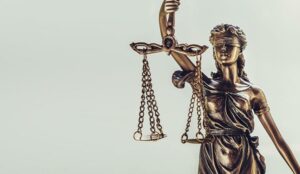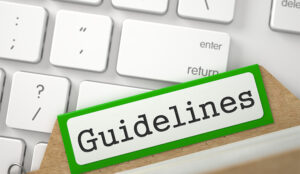Michal Rutzky of NICE introduces us to the US laws regarding call recordings and how to best use the technology in light of these.
It may be the most well-known recording of all time. Many can recite its words by heart, and it is heard daily by millions:
“This call may be monitored or recorded for quality and training purposes…”
That single phrase has woven itself into the collective subconscious of the masses, and it exists for good reasons.
As consumers, call recording is for our protection. As call center operators, it’s not only for our protection, but it also creates a framework for improving performance of call center agents.
For some, it’s not a matter of choice: industry regulations mandate that call centers record some or all of their customer transactions.
For other companies, call recording is an indispensable and vital part of quality, coaching, and training programs. Using the recordings in this capacity can yield tremendous returns in regard to agent development.
But that’s just one of a myriad of benefits call recording offers, so let’s take a look at some other examples.
The Benefits of Call Recording
It’s not uncommon for organizations to think call recording is mostly used as a tool for training and performance management in large call centers. Contact centers are among the most common examples for recording business phone calls, but they’re not the only use case.
Organizations of all sizes and in all industries can benefit from call recording as a tool for many facets of their operations, including marketing, sales, and customer service. And with the availability of solutions that record across multiple service channels – voice, chat, video, and social media – it’s easier than ever to compile a comprehensive record of client communications.
These records provide unique and significant benefits to organizations, including:
- Improved customer service
- Superior control of quality of service on phone calls
- Effective customer service and sales training
- Individualized employee feedback
- Comprehensive client communications records
- Possible business protection during legal disputes
- Improved sales and service efficiency
- Ability to analyze multiple calls with speech analytics for marketing, sales, or customer service
But organizations may find it difficult to navigate the many laws and regulations governing call recordings in order to reap these rewards.
So, now let’s take a look at some customer service call recording laws and the best practices to follow.
Common Customer Service Call Recording Laws
For some organizations, recording calls is a legal requirement for conducting business. But, no matter what, all calls must be recorded in compliance with the local laws of each party involved.
This means that you’ll need to know the laws in the jurisdiction you’re calling from and where the call is being received. But laws vary from country to country and even state to state.
Generally speaking, customer service call recording laws break down into two categories: one-party consent and two-party consent.
One-Party Consent
As the name implies, one-party consent means that at least one person in the call must consent to be recorded. If you’re one of the people speaking on the call and also recording it, this meets the criteria for one-party consent. If the call is being recorded by a third party who’s not speaking on the call, they must ask and obtain consent from at least one person in the conversation before recording.
Two-Party Consent
Two-party consent is also sometimes called “all-party consent.” Two-party consent means that everybody who’s being recorded on the call must give consent to be recorded. If one person speaking on the call is also recording it, they must inform the other person on the call that it’s being recorded before continuing in order to meet the requirements for two-party consent.
Currently, the following 12 states require two-party consent, while the other 38 require one-party consent:
- California
- Connecticut
- Florida
- Illinois
- Maryland
- Massachusetts
- Michigan
- Montana
- Nevada
- New Hampshire
- Pennsylvania
- Washington
But what if a person in a one-party state calls a person in a two-party state?
For example, a call center agent on Ohio, a one-party state, calls a person in neighboring Pennsylvania, a two-party state. If the recording takes place in Ohio, is it under Ohio’s laws and jurisdiction, or do Pennsylvania’s laws apply to its citizen? If you must record the call for compliance or regulatory requirements, you may be at risk with federal legislation if you do not record the call.
In this common situation, you are responsible for following the laws of both states, including obtaining all-party consent.
How to Notify
To help ensure you obtain proper consent and comply with customer service call recording laws, there are a number of ways to alert callers that their conversation with your organization is being recorded.
There are also many ways to inform your employees, which we discuss below, as we conclude this article.
Employer Agreements
Employer/employee agreements are perhaps the most suitable means of gaining consent from your employees. Many call centers have an employer/employee agreement that specifically states that the employee understands that their company phone calls may be recorded. This is typically a signed agreement. If consent to be recorded is an item that is included in an employee handbook or similar document, the document should include some form of signatory page to verify the employee has received and read the handbook.
Caller Notification
Inbound callers are usually notified through an announcement stating “This call may be monitored or recorded for quality and training purposes.” It is important to consider where the announcement is played in the call routing. It is often played after any touch-tone or voice prompting and before the caller is connected to an agent or a queue.
Playing the notification as a message in queue is not ideal, as this may result in either bypassing the message if the caller is connected directly to an agent, or redundant announcements.
Beep Tones
Beep tones may also be used as a means of notifying callers that recording is taking place. The requirements for a beep tone generally relate to its frequency and duration: the beep tone must be within 1260-1540 Hertz, and it must last .17 to .25 seconds. It must be played every 12 to 15 seconds while the call is being recorded, and it must be audible to all parties being recorded.
This blog post has been re-published by kind permission of NICE – View the Original Article
For more information about NICE - visit the NICE Website
Call Centre Helper is not responsible for the content of these guest blog posts. The opinions expressed in this article are those of the author, and do not necessarily reflect those of Call Centre Helper.
Author: NICE
Published On: 31st Oct 2019 - Last modified: 6th Nov 2019
Read more about - Guest Blogs, NICE






 NICE is a leading global enterprise software provider that enables organizations to improve customer experience and business results, ensure compliance and fight financial crime. Their mission is to help customers build and strengthen their reputation by uncovering customer insight, predicting human intent and taking the right action to improve their business.
NICE is a leading global enterprise software provider that enables organizations to improve customer experience and business results, ensure compliance and fight financial crime. Their mission is to help customers build and strengthen their reputation by uncovering customer insight, predicting human intent and taking the right action to improve their business. 































